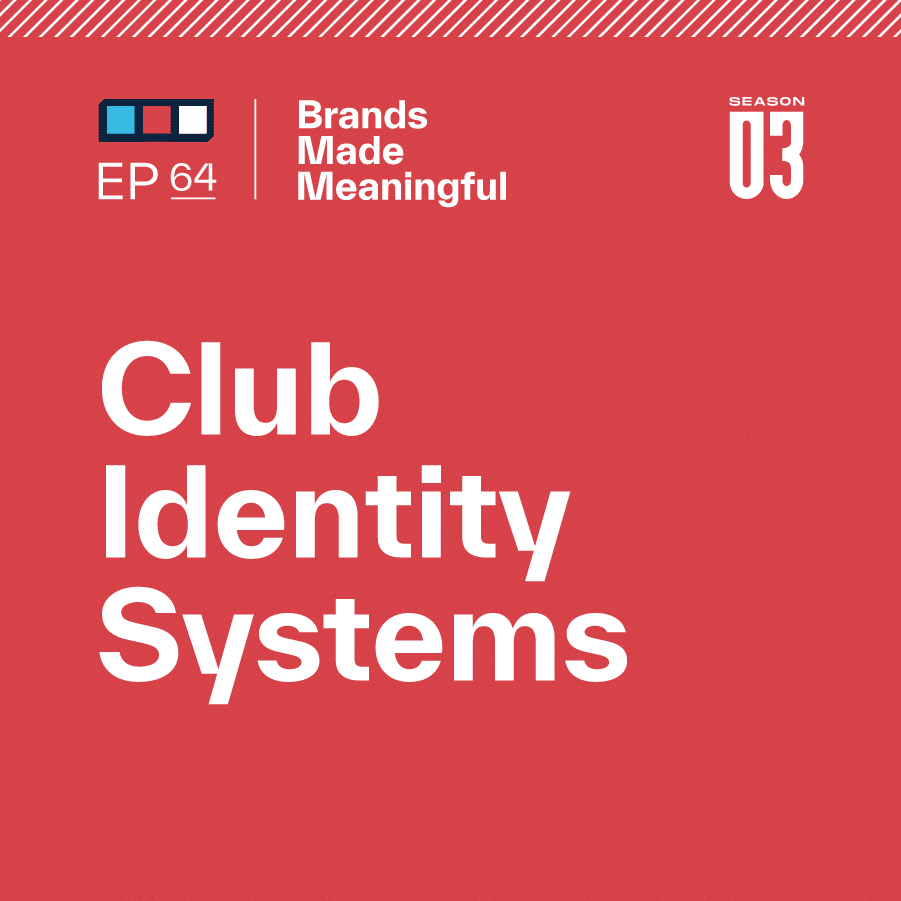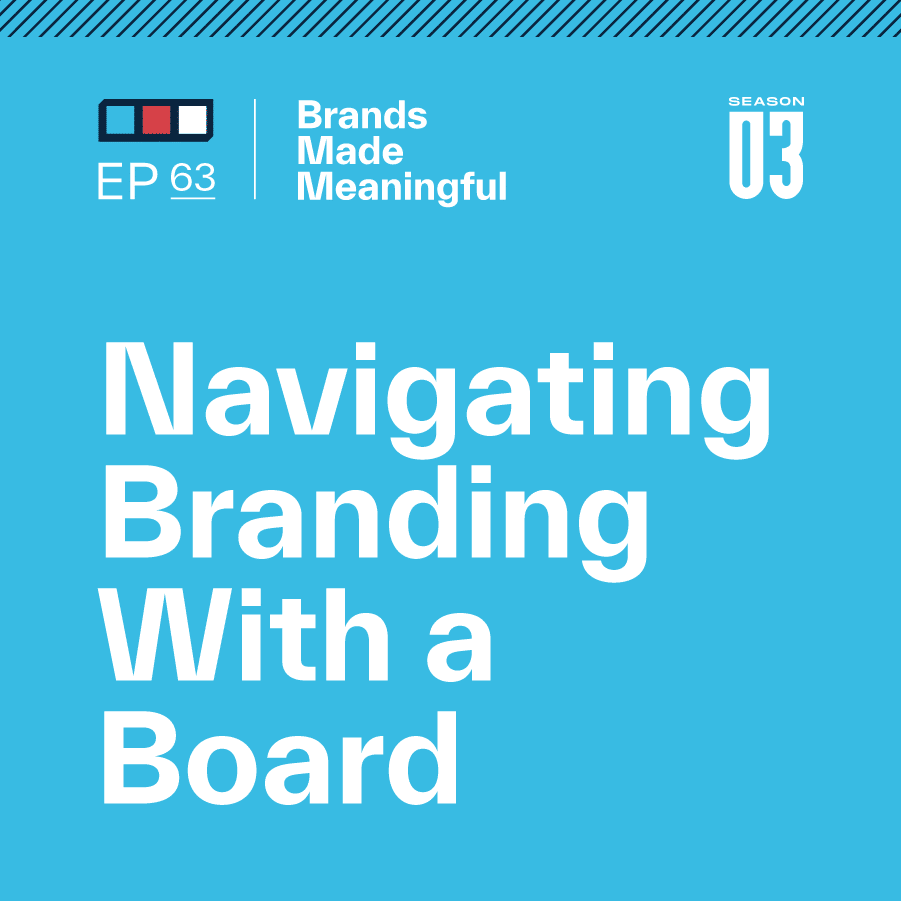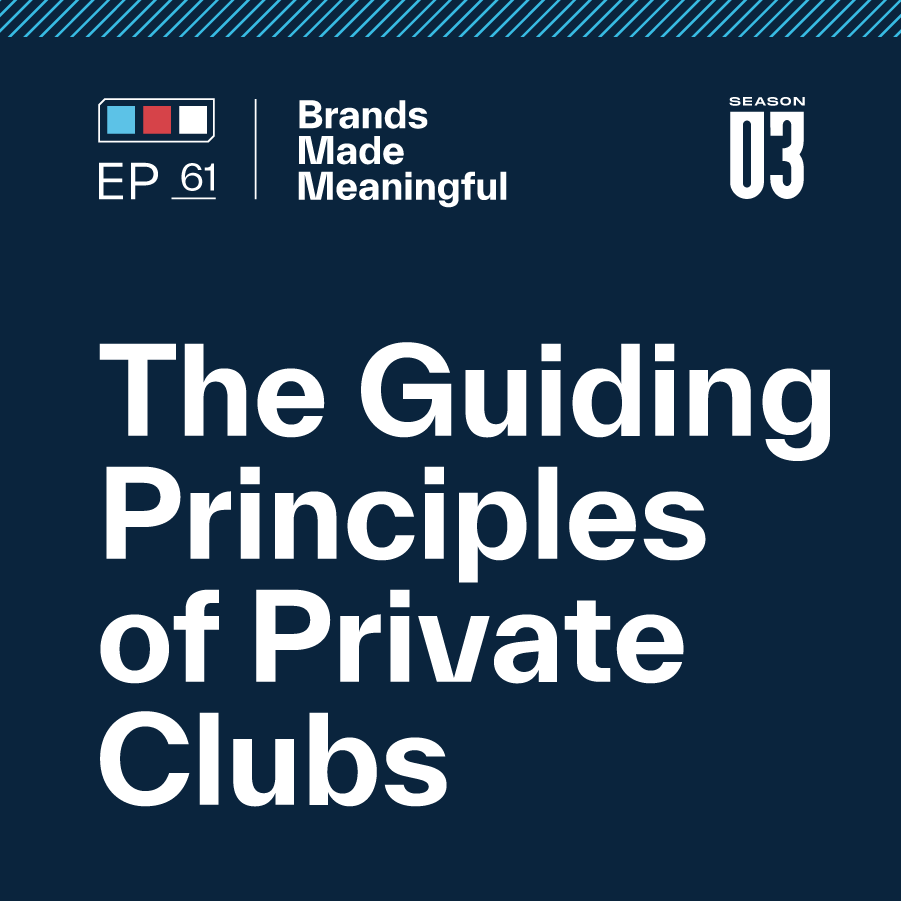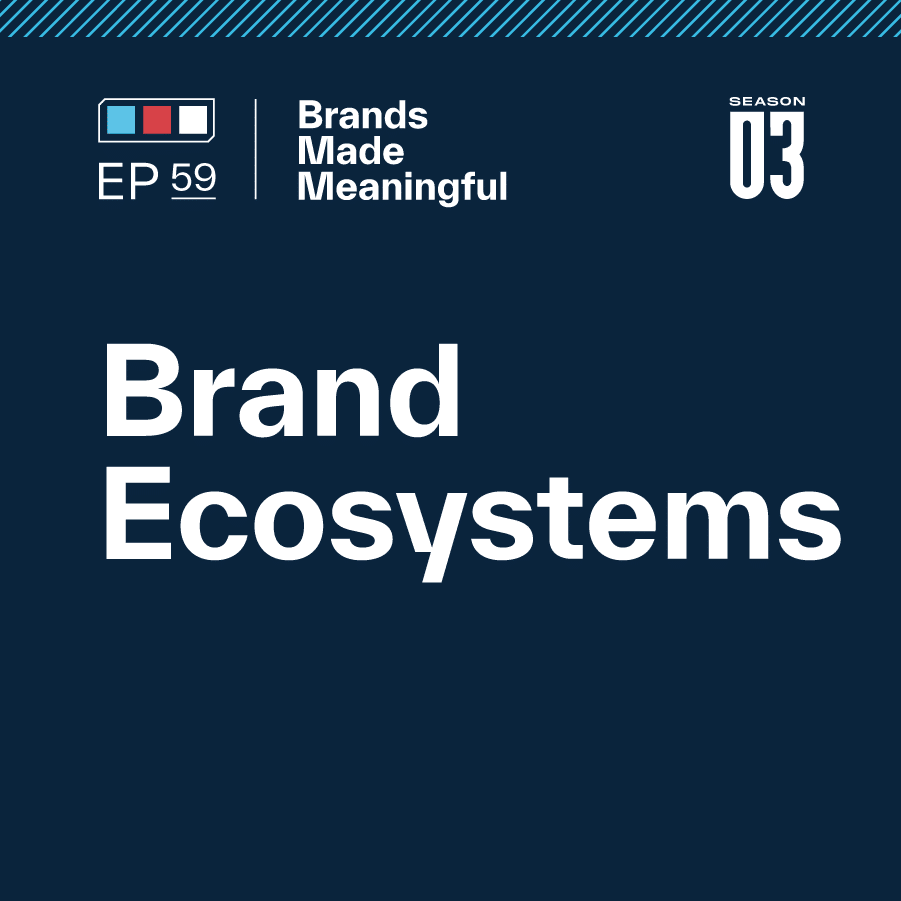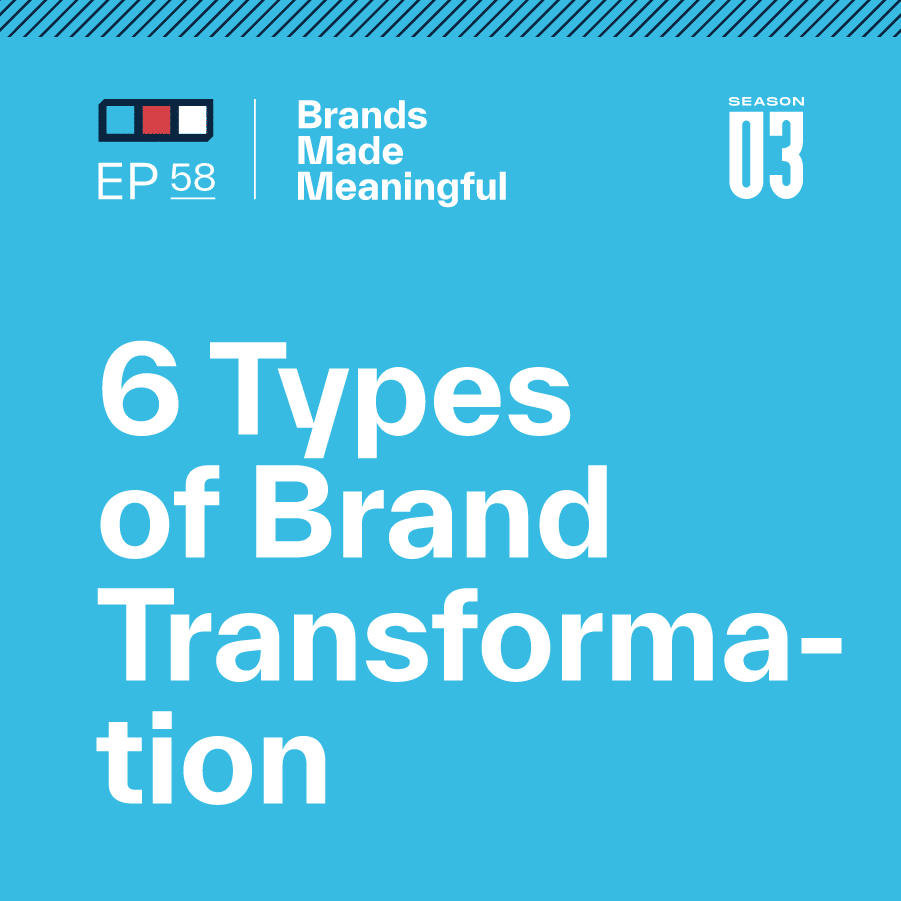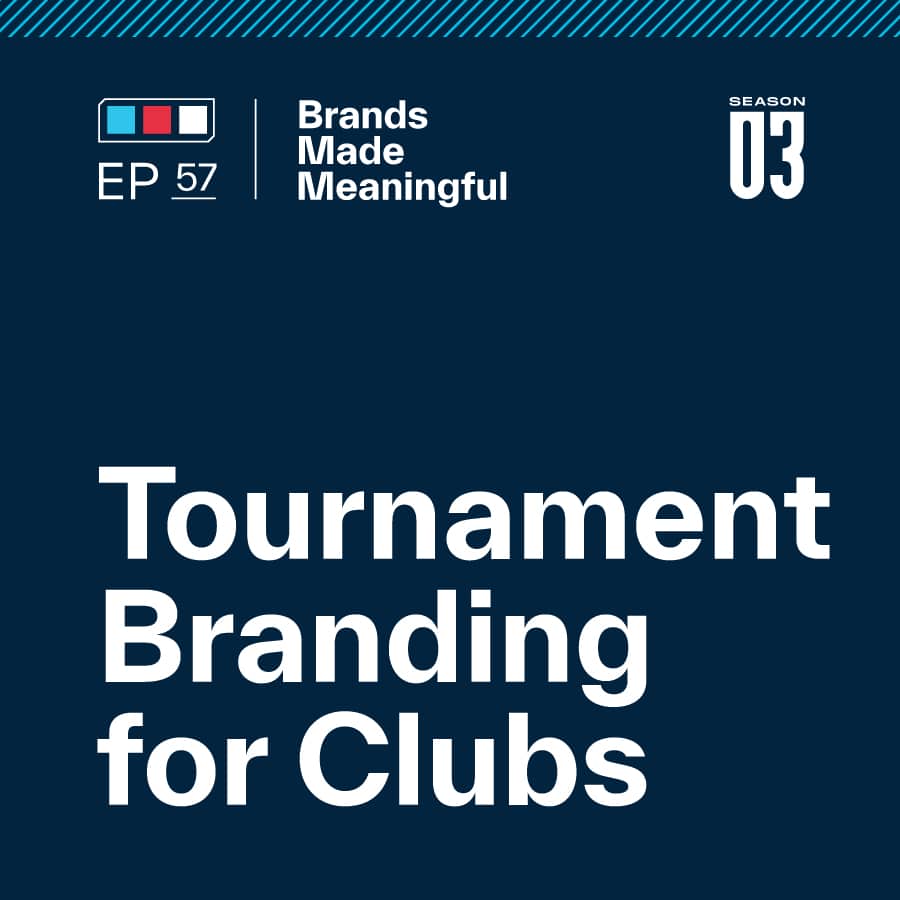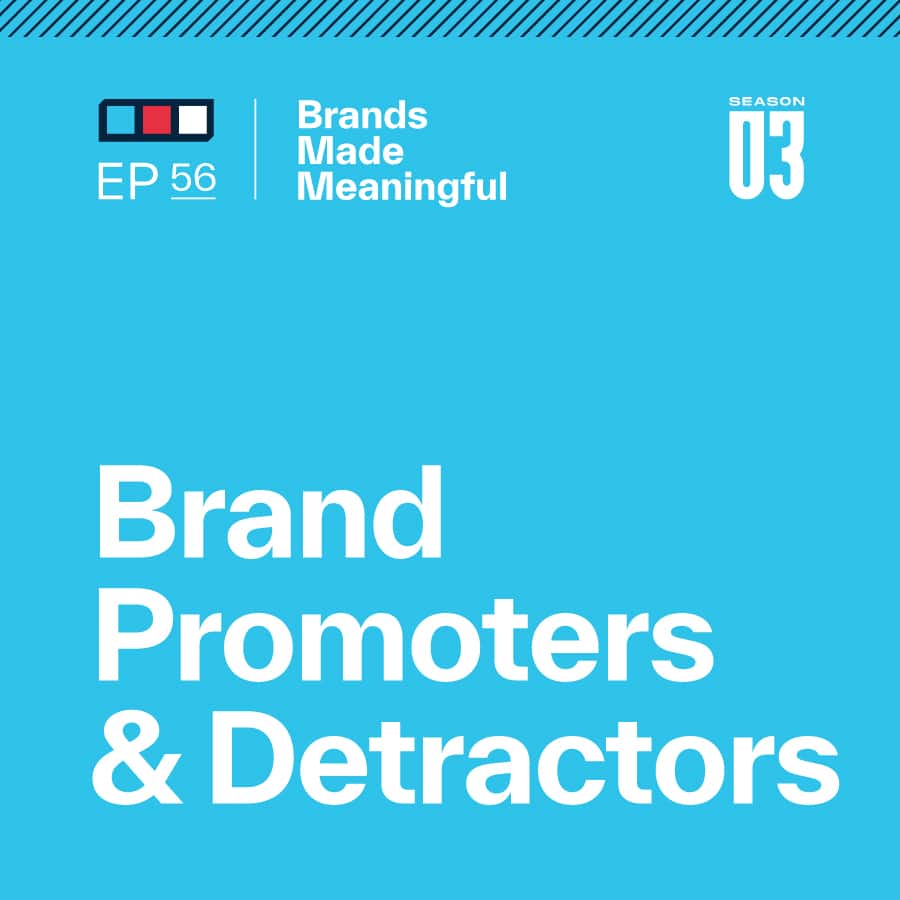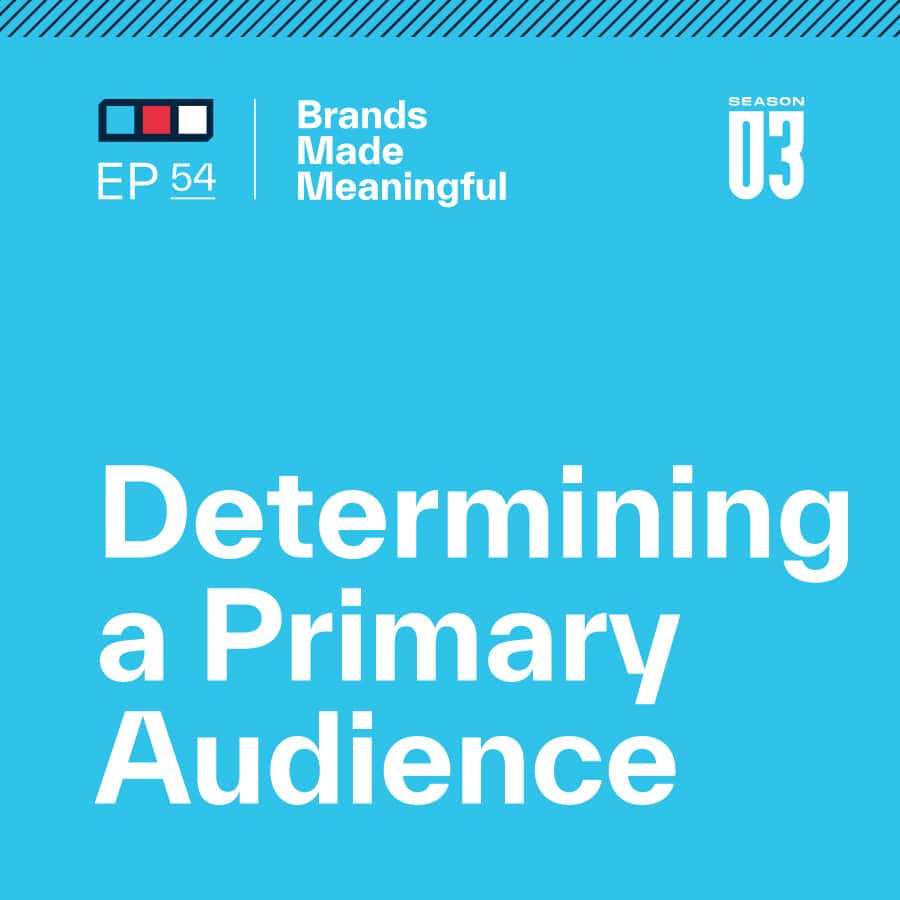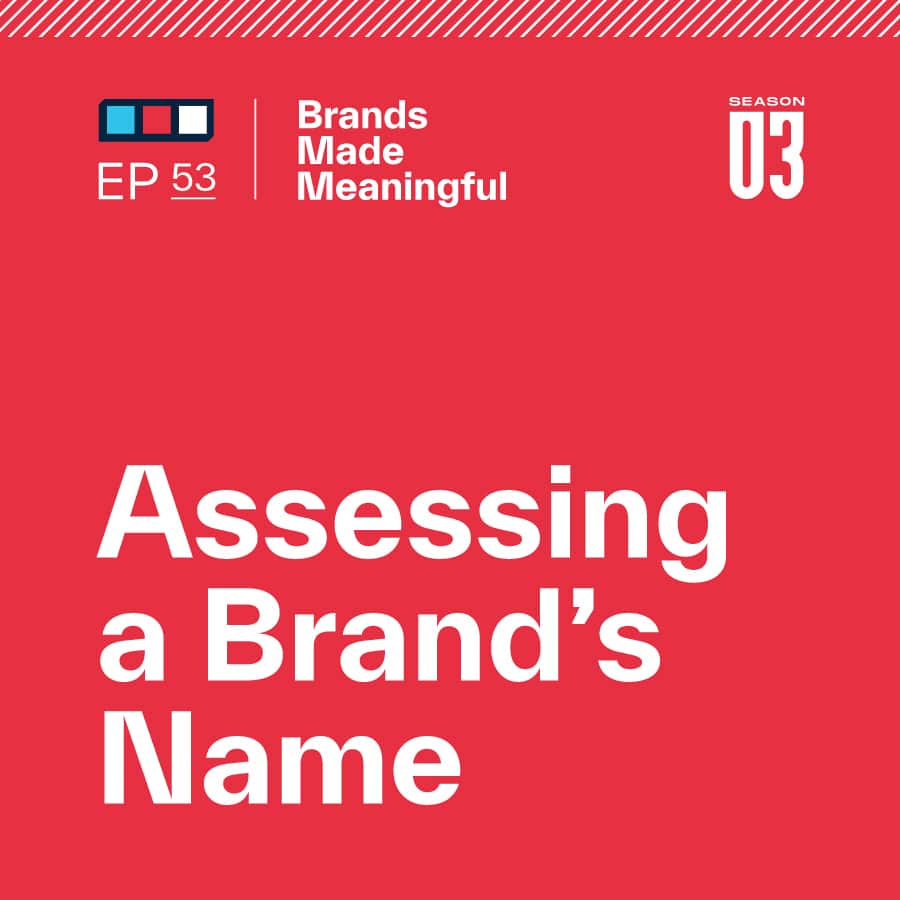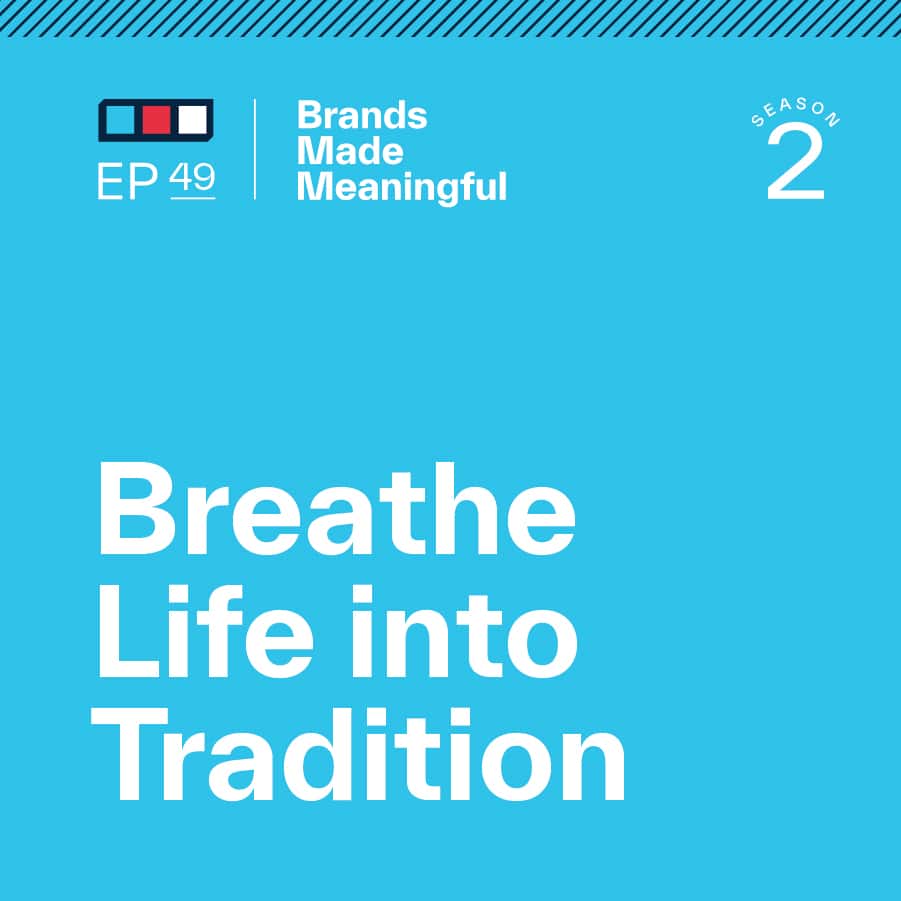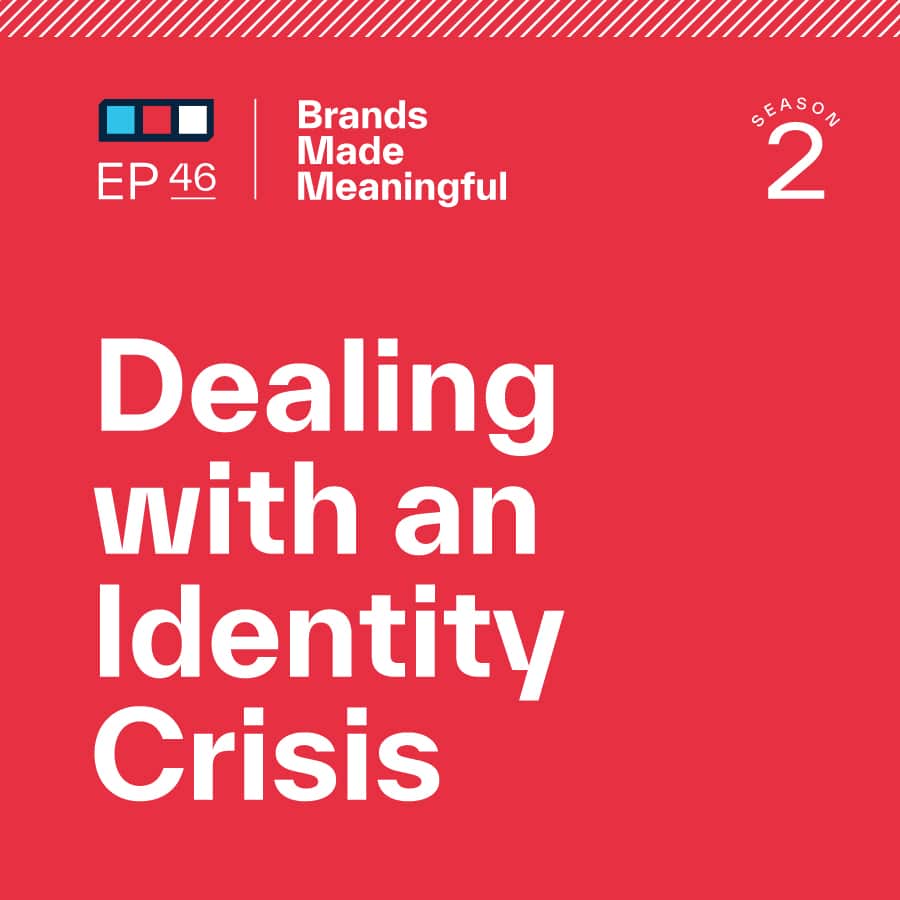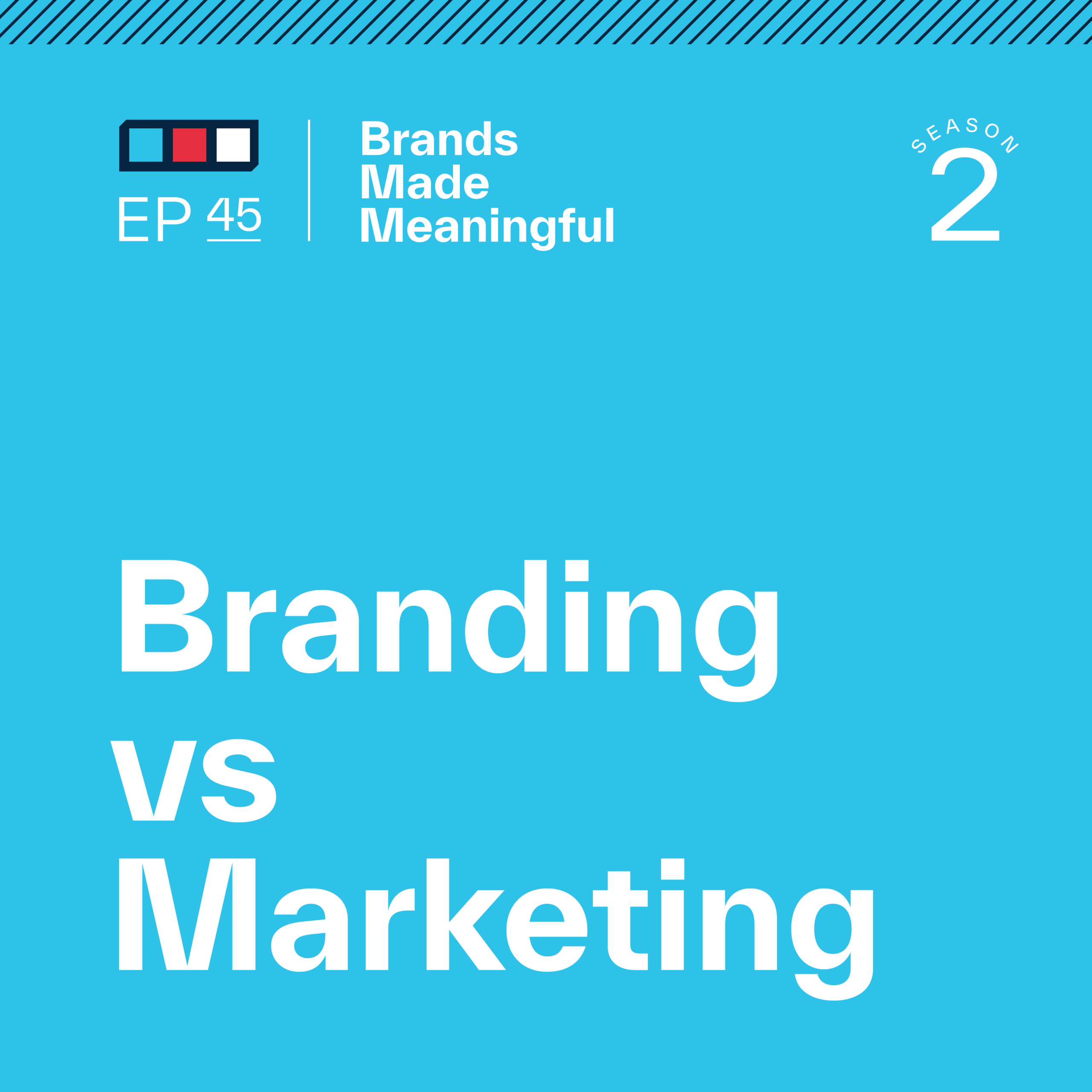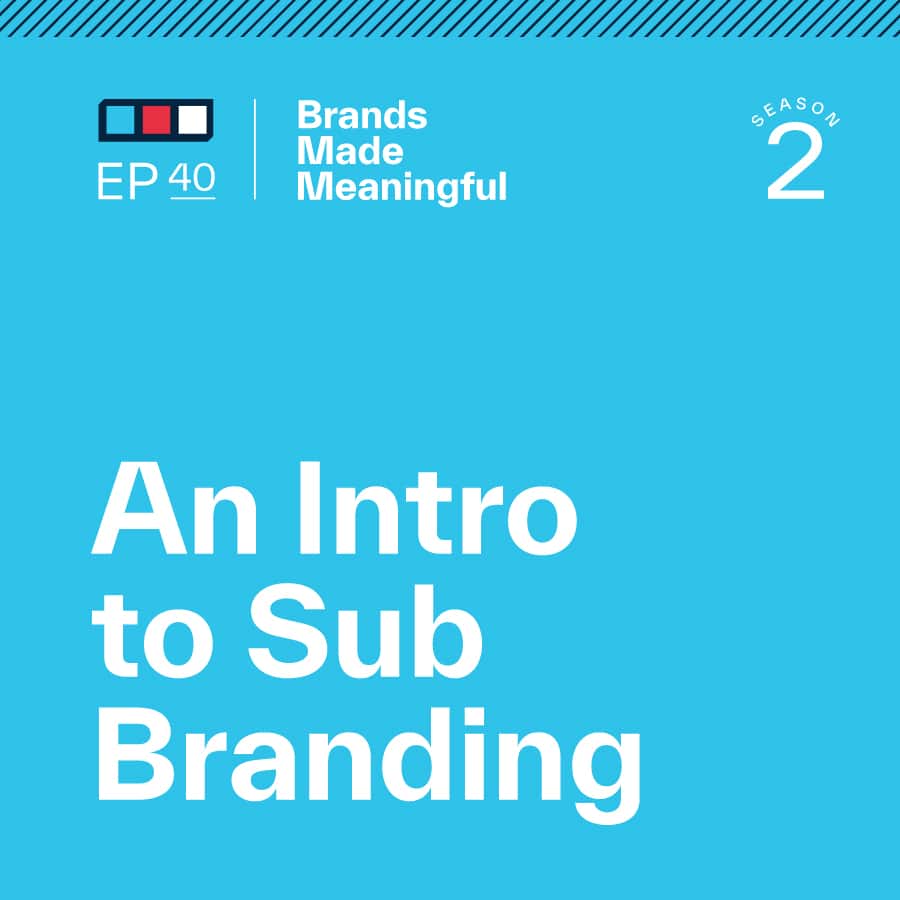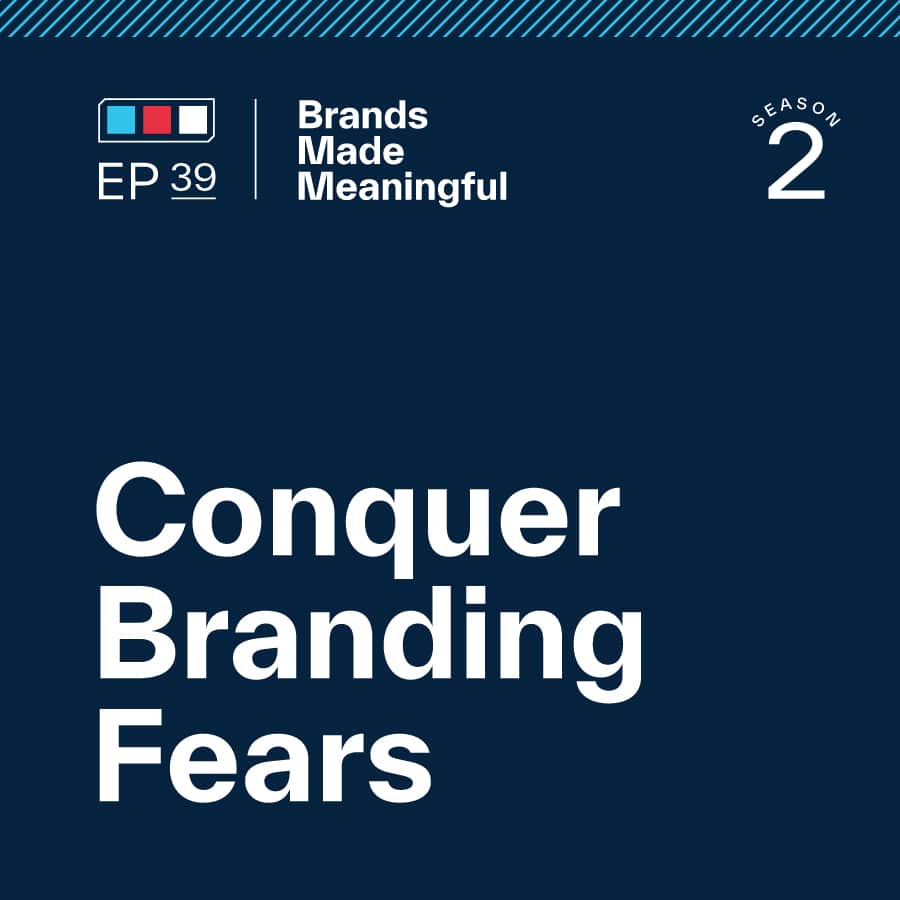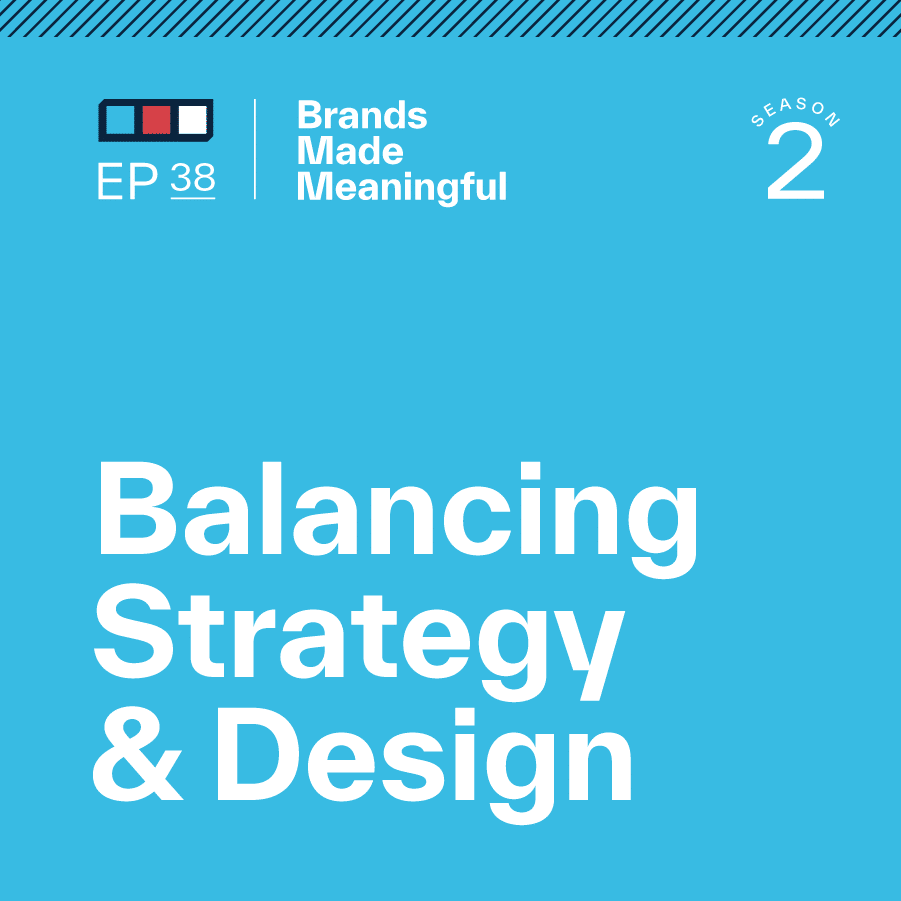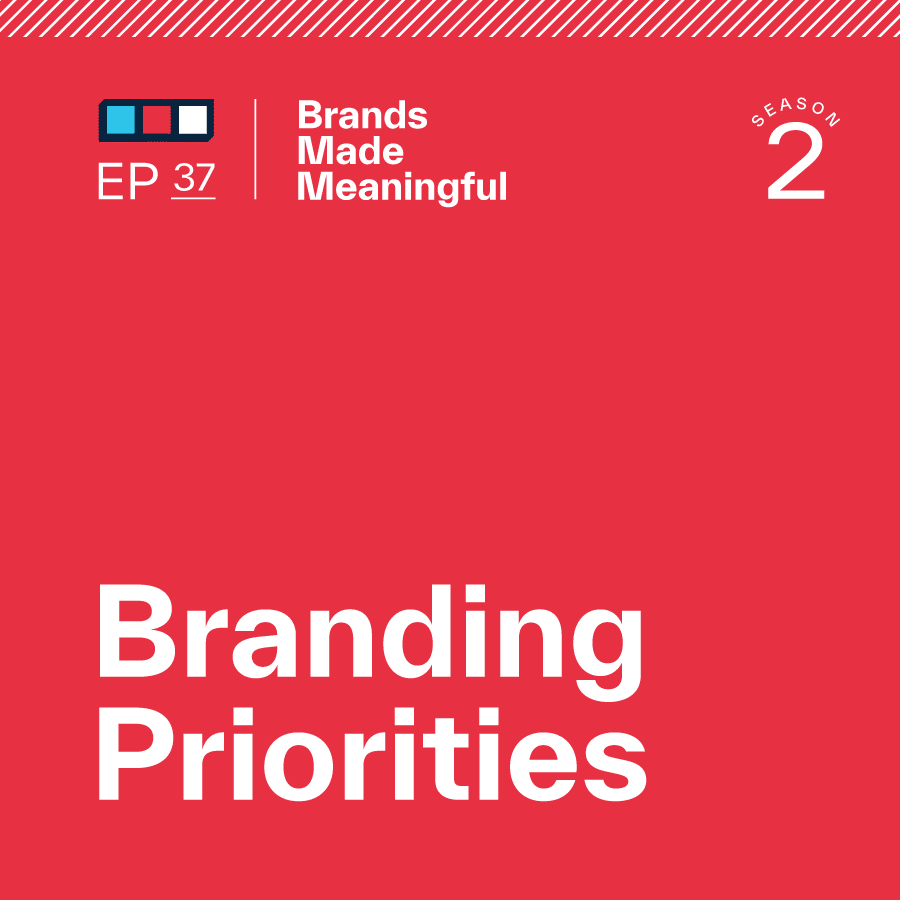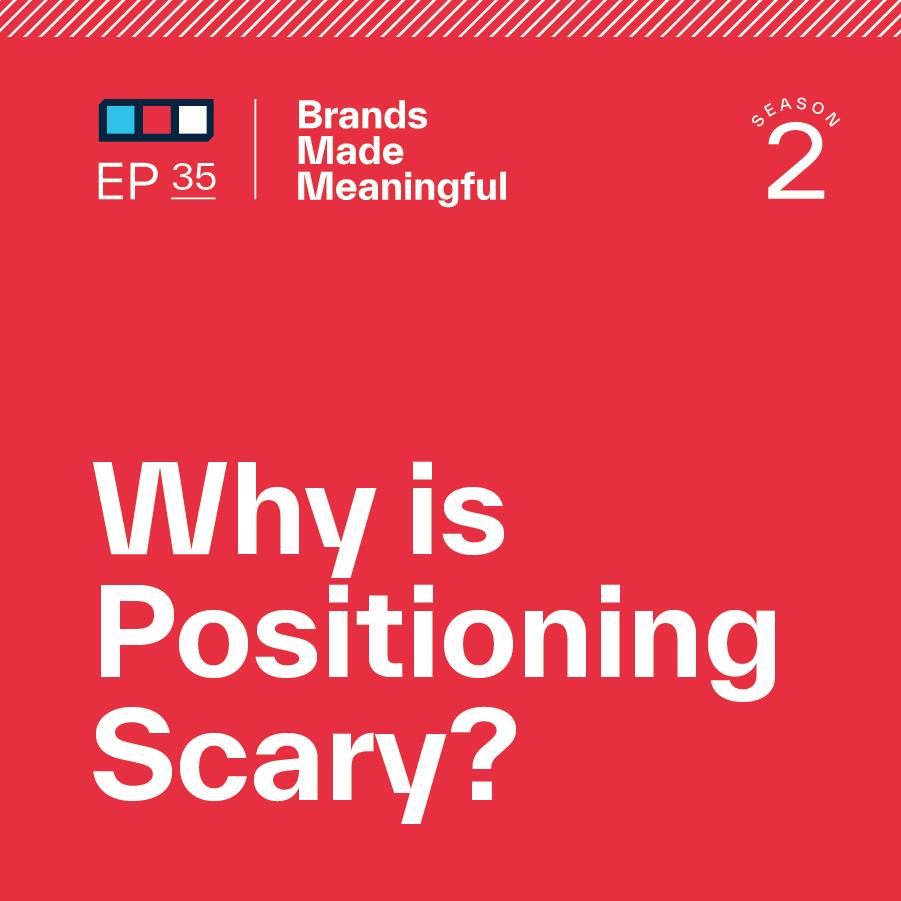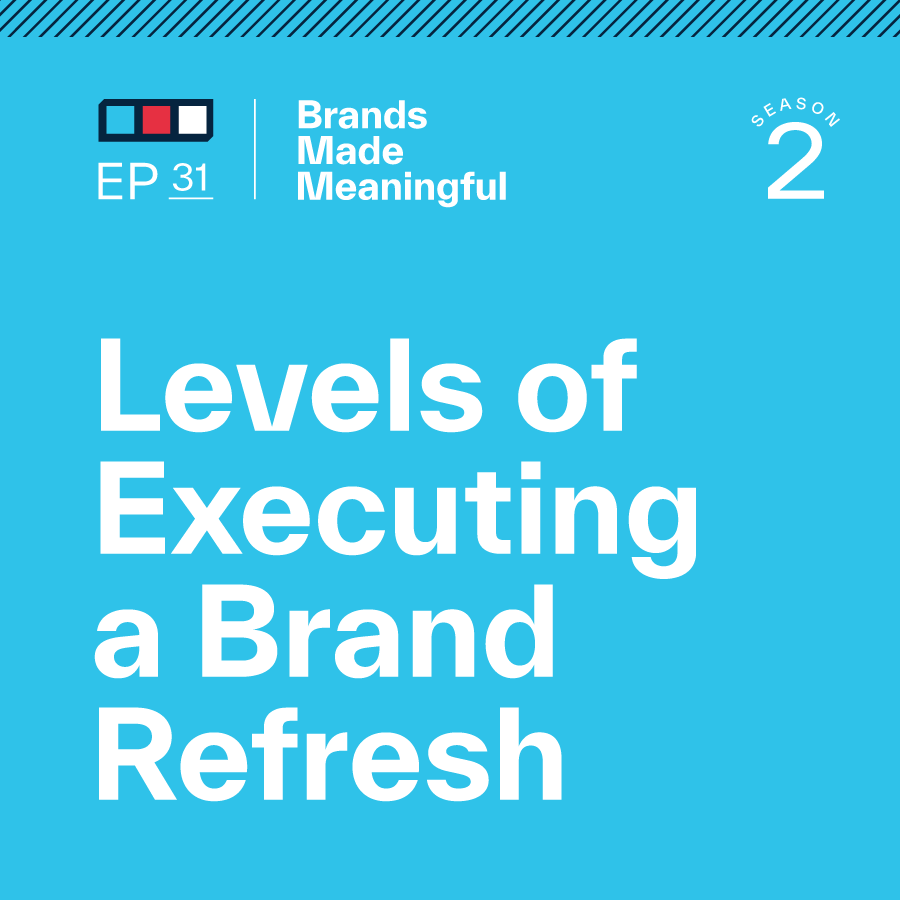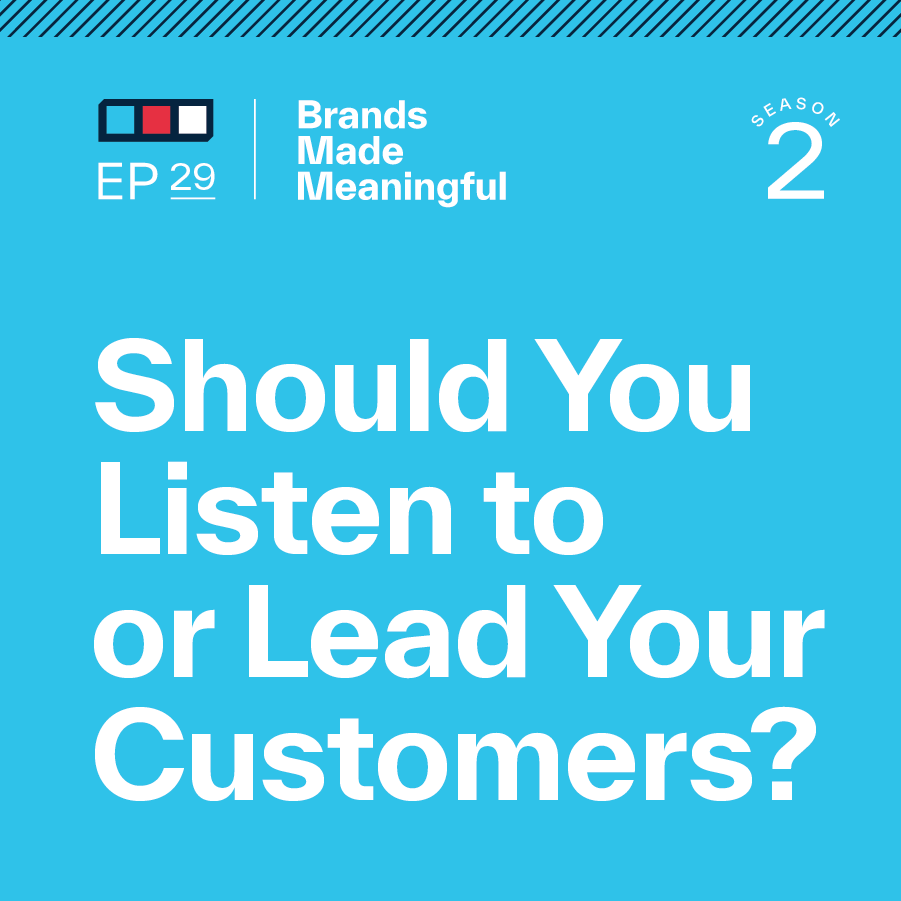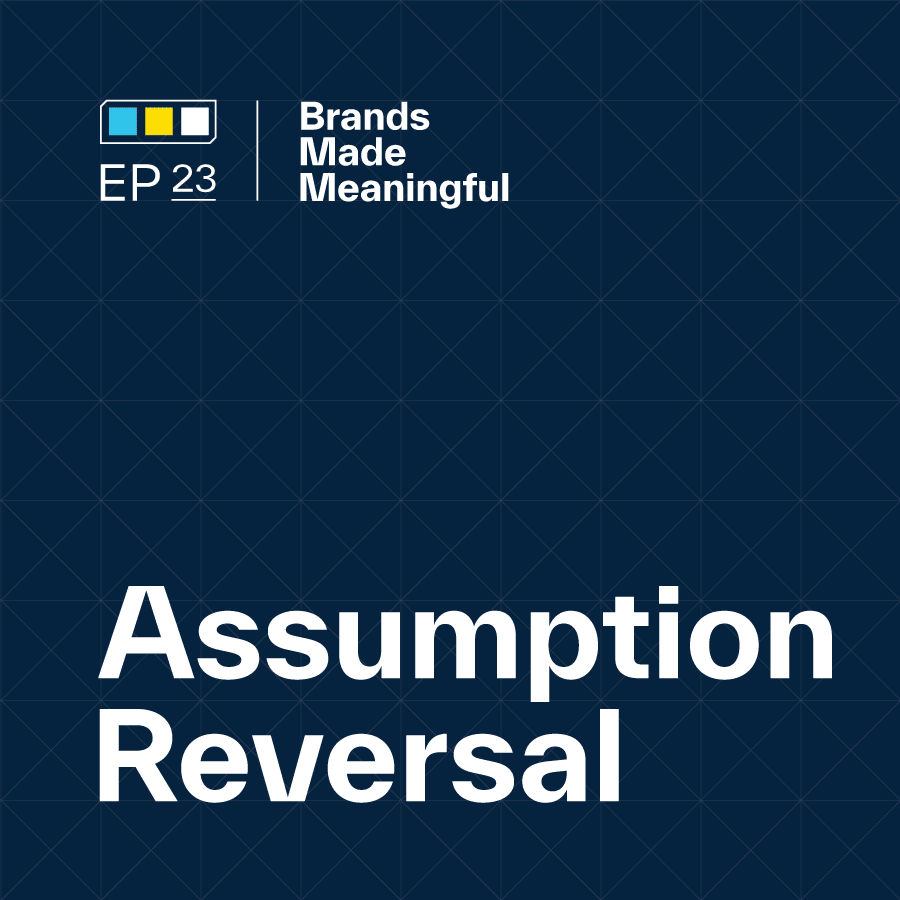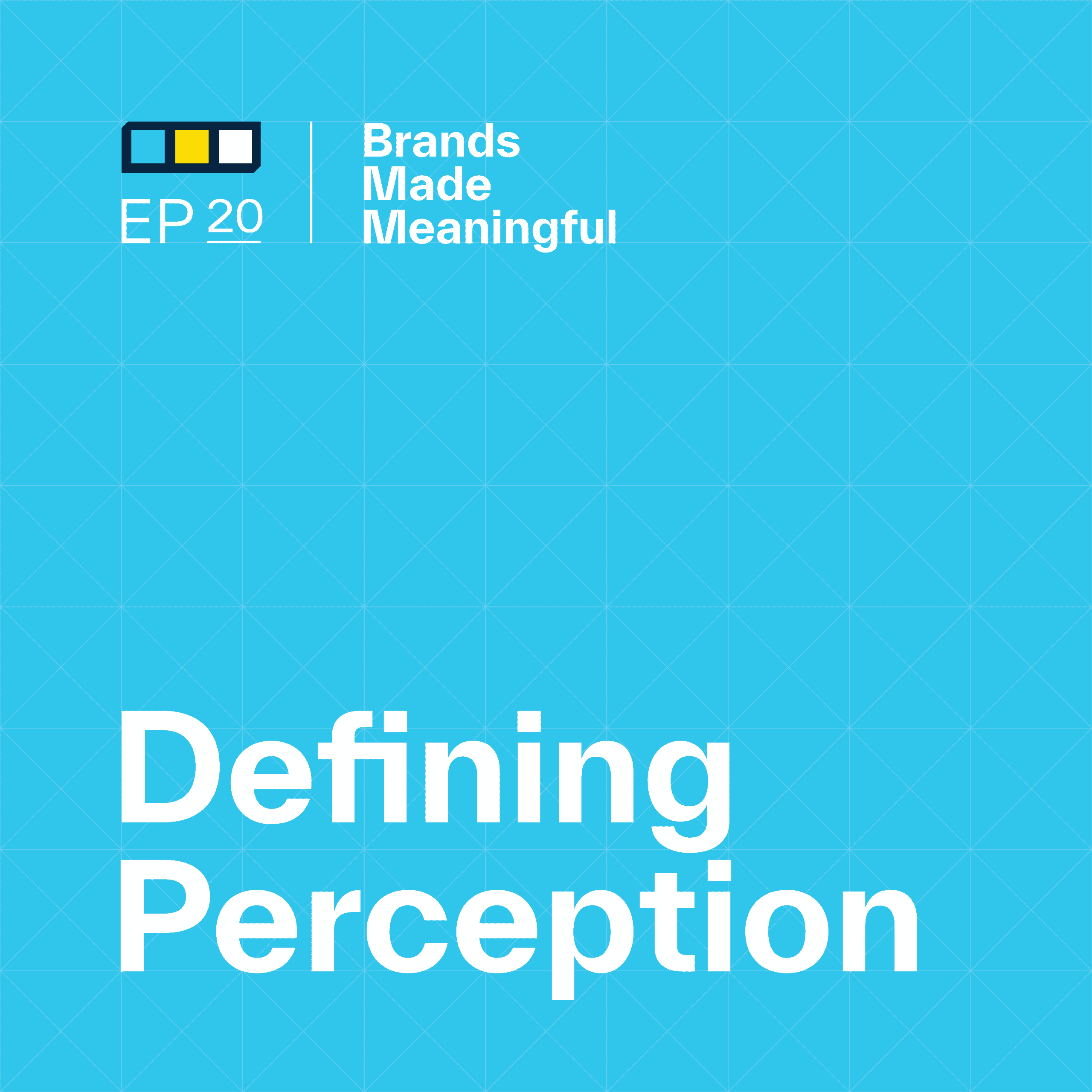EPISODE 57
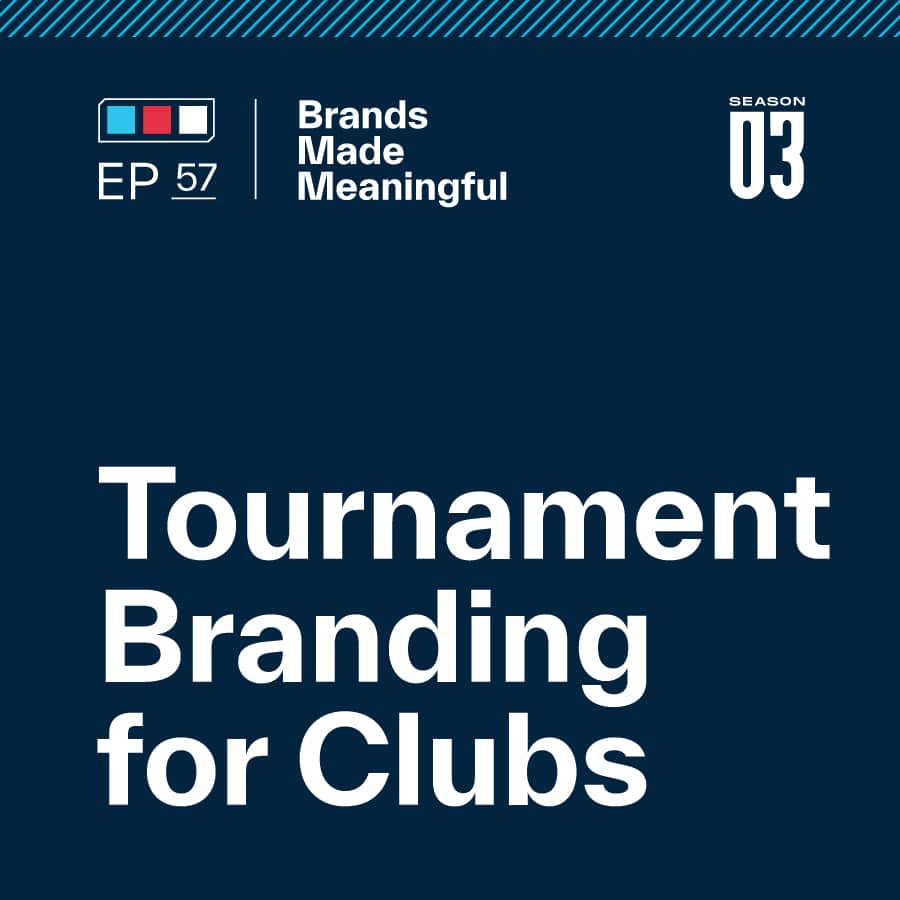
Tournament Branding For Clubs
Episode 57
Derek and Tucker discuss designing and delighting your club members with tailored events.
EPISODE TRANSCRIPTION
I want to talk about how we move through ecosystem branding
Tucker Which sounds super complex and hard, but I want to talk about it for private clubs today. So the note on the high level is we’re going to talk about tournaments and how we can leverage tournaments to help us connect with different members and leverage that in different ways.
Expand Full Transcript
Derek We’ve used the term brand architecture before. We’ve talked about an overall comprehensive brand identity system. So there’s probably a primary logo. There are additional graphics and there are supportive components, pieces, language, etc. There’s a whole system that builds this brand. But within that ecosystem, we want to hone in specifically on this very one component and talk about how it fits, what it means, why you do it, and why it matters.
Tucker This is something we’ve leveraged with clients on a big scale, like big sporting goods clients or maybe huge private club clients. And this comes back to say you don’t need to have a massive brand to leverage an ecosystem that makes you feel like you are a part of Blank Club’s world. This all feels very familiar. It’s all underneath the same story. And so a lot of our conversations start with a club around their master brand. What is it all about? What are we trying to do? What’s our large strategy here? What’s the story we’re trying to tell from the club? The 30,000-foot view is basically where we talk about the master brand.
Derek Top of Mount Everest.
Tucker Think about the master brand as what your primary logo is. What are your primary message components that may land on the homepage? What are some of those pieces that your master brand has control over? And then what our strategy is for our brand from a high level is where we start a lot of conversations. But not all clubs need to completely redo their entire identity. Or maybe they have a great strategy, or maybe they’ve already worked through all of that. There are plenty of times when we work through a club and it’s like, okay, now what? And this ecosystem is really interesting on how we ladder down that master brand and that identity and that strategy into the different areas and the events that the club has. There are so many different touchpoints a club has, whether it’s big, small, or indifferent, that can really tell its own story in unique, cool ways.
Derek There’s a reason why clubs have events, there’s a reason why they have tournaments, and it’s not about raising funds. Most member events oftentimes come with an additional fee, come with an additional price, and sure, there’s a financial impact to the club, but the real reason why clubs host events, especially tournaments, is to get their members involved, to have their members feel included, to give their members that feeling of a sense of belonging.
Tucker Or unity. To not only belong to something, but also feel a part of it, and to invite other people to be a part of it. So to unite each other in different ways is a great opportunity.
Derek Well, let’s dig in because I’m already jumping ahead into some of the conversation pieces.
Tucker So why does all of this matter? Tournaments are just an example. We’re going to use tournaments today to talk about if we’re going to dive into this ecosystem, a lot of clubs have tournaments. So it’s an easy first step to ask what tournaments are we doing. But if I were to back up and go, private clubs have tons of passionate people. That’s the one thing I can say is common across every single private club we work with.
Derek They’re emotionally invested, financially invested.
Tucker And financially.
Derek They’re emotional.
Tucker So from a 30,000-foot view, most of the members of a given club are similar. They have similar preferences. They probably have similar demographics. Maybe they come from the same area. And so there are some of those similarities that we gravitate towards when we talk about the master brand. But when you dive into it, private clubs are built with what I’m calling pockets of memberships. There are people who may have a passion for a certain amenity or a certain activity rather than a different one. Or maybe these are the people who have a different idea of what relax means. To me, relax might be playing tennis. To relax, you might be sitting by the pool.
Derek They have their own identities. They have their own what we might call cliques or groups or pockets of things specifically inside that club that they identify with. We know people in clubs that have a killer golf course, but they don’t play golf. They identify with tennis. They are there and they self-identify as tennis players.
Tucker So what we try to do from a master brand standpoint is look at the similarities across all of them so that we can tell a story that resonates with everybody. But when you get down into these tournaments, for example, or these events, you can really let those nuances shine. That gives those pockets of members footholds within your identity to make them really gravitate towards something. Maybe there’s a once-a-year member-member tournament that they love being a part of, and they love the tradition of it. How can we enhance that experience from a brand side so that they feel like this is really for them? That’s our goal within that ecosystem – to give everyone throughout the club a place to land.
Derek For some clubs that we’ve worked with, we’ve actually designed member-only logos. For that club’s culture, it was really important in that emotional investment with that membership that they identify as members of that club separately from the sort of outward-facing or guest-facing brand, the master brand. It was a special additional way for them to have something on their sleeve that says, I’m a member here. I don’t just belong here. Again, it’s back to enhancing that feeling of belonging for that membership. We had a conversation with another club about potentially creating a member-only logo for them, and they said, Absolutely not.
Tucker It’s not a part of their strategy or who they are. It’s funny how many answers you can find by just going, What are we trying to create? What perception are we trying to create? Okay, here’s what we’re going to do about that. And so member-only logos are absolutely a part of that conversation. But what I think it comes down to is the original goal of all of our branding is authenticity, relevance, and surprise. If we think about that, how can we do that from the members at large? Here’s the general way of doing it. And then how can we narrowly do that for a select group of people that might participate in this one event once a year? How do we build authenticity around this event? How do we build relevance just for these people who participate? Maybe it’s a tennis tournament and they’re all in on this one nuance that the way they play tennis at this club is like this. How do we leverage that so it feels like this is really us, and then bring that to the forefront in a really exciting, delightful way? It is that surprising nature that makes someone go, I can’t even believe they would put the effort in that time into building a story around something like this. This is awesome.
Derek That’s why what we’re not talking about today are tournament logos. We’re talking about tournament brands.
Tucker Yeah, absolutely.
Derek Just like your business, just like your marketing plan, having a brand in place gives you the story to tell that will attract people to this event, and help people understand what this event is, who it’s for, and who it’s not for. I mean, it’s a mini-positioning exercise.
Tucker Absolutely. They’re all like, Here’s our large position. If you ask me, and I would challenge everybody, you can always go more narrow. There’s always an opportunity to go more narrow. And so whether it’s a tournament like we’re talking about today or we’ve done it with clients to say, What does your youth program look like and what does it sound like and what story does that tell from a variation of what your large story is? What unique angle we can take on this one is the way that we can delight the pockets individually. So think about that. What do your youth members want? What the children of your club want is very different than what the paying front members want. So we need to build a brand that is generally for everyone. But that nuanced small pocket can be delighted in a different way, but it all feels cohesive and feels like it’s a part of the same world.
Derek An example outside of the club world is the professional sports teams that we work with. The Minnesota Vikings, in particular, have identified six very distinct subsets of fans – or seven. It is growing. I know they continue to analyze that, especially with the new generation coming. And what they’ve clarified are the nuances of what is important to each of these different subsets. I know we’re not talking about teams today, but imagine in those conversations for your club to identify, it might not be seven, but to identify those different subsets of members and profile them so that you know what each of those groups wants and what’s important to them.
Tucker And how you build things, activities, and events for them is the challenge that they’re up against. So if we have these seven, but we have training camp, how does training camp speak to each one of these in a different way? And how do we get them to be involved and which one’s going to be more involved and which one’s not, and just to understand?
Derek In most teams’ brand training camp, most teams will brand the draft because they know there are certain subsets that are maybe the most important thing to them for that entire season.
Tucker So bringing this back to private clubs, the way that we can be successful is by taking those, I would call it retail mindsets that we can have from a brand perspective, and saying you as a private club are much more than just a place for people to hang out. You are an experience. You are a lifestyle. How do we leverage that, leverage the attention that you have? And I think there’s a lot of people now that say attention is everything. So if you can get someone at your club and have them be engaged and want to be there, then you’ve already done the hard work. Now it’s time to leverage that engagement in a billion different ways. And that’s where we’re coming in with doing this in a unique way. Let’s do it so that someone who goes to your event, if it’s a member guest event, that guest says, Whoa, I know every year that I go there that I’m at this club because they do it this way, and that makes me feel like I’m a part of something, even though I might not be a member.
Derek But they may become a member.
Tucker I know.
Derek Because you provide that great meaningful, memorable experience that really lands the touch points of what that specific type of potential member wants, especially if they’re friends with the guest who brought them. Make no mistake, member guests are recruiting events. They are marketing networking opportunities to grow brand awareness.
Tucker We had a client the other day who said their member guest is the commercial for their club, which I think is a great way of looking at it. So what do you do when you’re trying to do a commercial? You will build a campaign and you understand the themes and you understand how it looks and how it sounds and what we’re trying to do here, and that that type of thought process can benefit a club when it comes to building an event that not only resonates but feels so uniquely your club that people inside and outside want to be a part of it.
Derek If I’m the GM of a club and there’s one that we work with that has one monumental tournament a year, and that’s the only one that they care about, it’s the one they put all their investment in, this doesn’t sound like that overwhelming of a prospect.
Tucker No.
Derek But another club that we work with has 6 or 7 tournaments. Especially when you have the men’s versions and the women’s versions, branding seven different events – golf events only, just golf tournaments – it might sound a little bit overwhelming. What’s the first step that they can do?
Tucker When you have a lot of tournaments, and we’re not even going to get into the events and the amenities and those things, but just the tournaments for right now, say you have 6 or 7 tournaments. What I would do is I’d put them all out on a piece of paper and I’d go, which ones are most attended? Which ones are the least attended? Which ones have the biggest value to us as is? What are the most engaging and what are the least engaging? And then I would try it with two out of, let’s say, six, to really tell a unique story. I would do the least attended one. How we can make people interested in this would be my conversation with them. Whether we have to change the format, whether we have to pull in certain nuances, what can we do from a brand perspective to get people really engaged with this one? And then the one that has the highest ROI for your club, or the highest impact, or whatever you want to call it, I would look at that and say what is great about this club that we can enhance even more and bring to the forefront to give people that lasting memory. And so if we come with those two, that’s where I would start. I wouldn’t go with all six right away because you don’t know what you don’t know at this point. You can see the impact if your club resonates more with the traditional way of going about it. And so you’re going to say, Okay, we’re just going to focus on branding the events and tournaments that are less attended. Or maybe you’re saying that doesn’t really affect our club, but they love it when we give them more merch for the events that they already attend. And it’s unique and it’s us and it’s different. So we’re going to lean on those. And I think that there is no one perfect strategy for these things. But to start with the worst and the best or the least attended and the most attended, that would be a good way. I would start just kind of A-B testing that.
Derek Even going one step further backward, I would follow the same process that we would implement in branding anything, but just in a mini version. Do a little bit of discovery. Understand who the audience is. What do they want? What do they care about? What’s working? What’s not working?
Tucker In my opinion, every tournament should have a mini-story about it. Like why is this important to our club? What are we trying to accomplish here and what kind of atmosphere are we trying to create? Just that mini strategy around it can really impact how your team goes about building that. And it gets clearer to say, Well, maybe we should have live music this year at this one because of X, because it makes sense within what we’re trying to do.
Derek Having a strategy gives you something to anchor all of those considerations and decisions. Should we have a live band? Absolutely. Because this event is about X, Y, and Z. And that’s a critical part. Maybe the name of the event could be more authentic and relevant to our membership and more specific to us versus just the generic club championship, etc.
Tucker And some people will roll their eyes and ask, God, do we need all that just for a tournament? Think about when you onboard new members, just in general. They come on and they don’t know anything. They don’t know this, that, or indifferent and you’re really trying to focus on the fact that we have this opportunity to build this tournament up. If that tournament has a story and it’s compelling, some people will gravitate towards it naturally because they’re like, That sounds really cool and I would love to participate in that. If you don’t give anyone anything, just figure it out as you go, that’s not going to be the best way to tailor that perception. Then it’s just going to be whatever it can be without you having a say in what you want it to be. And that’s where we get into you’re just throwing darts into what this tournament has the potential to be.
Derek It’s back to make it meaningful. Just like your master brand. Make it strategic, make it thoughtful. It doesn’t have to be incredibly complex. But when you make it meaningful, you make it memorable. You make it desirable. You delight the members. If you’re working at a club, you are probably in the hospitality industry. In some way, shape, or form, you’re trying to make this a better experience for your members. And this is a really easy sort of common sense way to crush it.
Tucker It’s not that hard. It’s about that delight in an unexpected way. I would tell you, most members would not expect you guys to pull this thing together. That’s impactful when you talk about the financial investment that they put into a club to give them things like the master brand, which I would say is expected from the new generation. The tournament brands and all of these other things are unexpected moments of delight that I think stick with them as they make decisions on how they should keep going. What do we want to do this weekend? Do I want to attend that event when they’re looking six months out? Maybe they block their calendar because that looks really cool. They think they want to give it another shot. So there are some of those things that I think that we can be more purposeful. We can be more meaningful, as you would say. That helps us pull in that story in all the little cracks and crevices within our brand ecosystem.
Derek And you’ll probably get a nice little boost in merch.
Tucker It does not hurt to talk about the merchandising. So that’s the cherry on top, right? We don’t lead with that because if you’re just doing this for merchandising, you’re not going to get everything you want out of it. But you do see a lot of people saying, Wow, we have this really well thought out tournament and everyone buys the merchandise because they love it and they want to be a part of it. And that’s just this great cherry on top.
Derek So to wrap this up, back to what we said at the beginning, narrow in on each of these events. If you only have one, really hone in on what it is, who it’s for, and what’s unique about it, so that you can build that story that helps make it even more special than it might be today.
Tucker If I were in the GM’s chair, or if I were a CMO of a club, I would look at all of our different membership types – not just the way they pay, and not just if they are an athletic member or a golf member. I would look at our personas and say, What are the types of people that are members here? Which ones are our biggest detractors? And then I would try to build something for them first. That’s a really interesting way to start bringing some of those detractors into promoters by saying you might not love every single angle of this club, and that’s okay, but you’re really going to love this because we’re going to build it just for you. And that’s a way that they can grow that membership loyalty in different ways that is a less intrusive way of doing it than completely rebranding the whole club.
Derek I love that idea. I think it’s very smart. I think it’s typical for us to lean into what’s working and just either take it for granted or maybe try to make it work even better. That’s easy. Those are our promoters. And it is important to keep our promoters happy. That’s why earlier you said your advice would be to look at the best-attended one. You see what’s working and how we can make it even better. But if we can take some of those detractors or some of the people that are less involved, less emotionally invested, and figure out a way to bring them into the fold, get them excited, and give them something that’s important to you, worst case, you realize you now have an event you could take off next year’s calendar.
Tucker Absolutely.
Derek Best case, you engage this group of people.
Tucker And they love it.
Derek And they love it.
Tucker And I think that’s what you’re playing with here. If you’re a GM, you know you’re in the business of making people love what you do. So if they love your club, then you are in the green. You are winning. Don’t be afraid to have fun with tradition. That is what I think holds a lot of clubs back. They have this sentiment that it’s always done like this, and the members like that. But they might not know what they don’t know. They’ve never experienced having a really well-branded tournament that has all of this storyline and all of this visual interest to it. They’ve never had that. So how would they know if they like it or not? If you’ve never eaten apple sauce, you don’t know if you like it or not.
Derek I do not like applesauce.
Tucker I know you don’t like applesauce, so that’s why I use that one. I just don’t think you’ve tried it yet. I think that what a lot of clubs can do is test. Try. Don’t test like a survey. Just try new things. Try to explore outside your traditional way of doing it from a visual brand side. You’re going to find that members think this is fresh and exciting versus being upset. And there will be those who are upset and you’re going to have to live with that.
Derek Not everybody likes change. But when change is done right, and when it’s done thoughtfully, and when it turns some detractors into promoters and enhances the overall experience and membership and sense of belonging of your membership, then you’re doing it right.
Tucker This is a great conversation. I really like these conversations.
Derek The applesauce open. You can take that if you want.
Tucker You won’t attend though.
Derek Depends. I don’t know what it’s about yet.
Tucker All right. Thanks for the conversation. Until next time.
Derek Next time. Sussner is a branding firm specializing in helping companies make a meaningful mark, guiding marketing leaders who are working to make their brand communicate better, stand out, and engage audiences to grow their business. For more on Sussner, visit Sussner.com.
More Episodes Like This
Building Brand GuidelinesEpisode 65
Derek and Tucker show us how to build infrastructure guidelines to unify your brand experience across the board.
Club Identity SystemsEpisode 64
Derek and Tucker cover what Identity Systems entail and how to discern between internal and external methodologies.
Navigating Branding With a BoardEpisode 63
Derek and Tucker bring clarity to uniting your company under one cohesive vision.
Putting a Committee TogetherEpisode 62
Derek and Tucker assemble your need-to-know facts when putting together your committee.
The Guiding Principles of Private ClubsEpisode 61
Derek and Tucker go over the top ways private clubs can find the balance between pleasing old members while attracting new ones, all while making moves towards the future.
How Color Affects PerceptionEpisode 60
Derek and Tucker cover how to best convey your business with color.
Brand EcosystemsEpisode 59
Derek and Tucker break down how to craft effortless experiences when considering your brand as a whole.
6 Types of Brand TransformationEpisode 58
Derek and Tucker dive into 6 distinct types of transformations for a wide range of brands.
Tournament Branding For ClubsEpisode 57
Derek and Tucker discuss designing and delighting your club members with tailored events.
Brand Promoters & DetractorsEpisode 56
Derek and Tucker discuss how high level promoters increase your NPS and how to turn the tides on your detractors.
The Loudest Voices in the RoomEpisode 55
Derek and Tucker talk about gathering feedback while prioritizing every voice.
Determining A Primary AudienceEpisode 54
Derek and Tucker discuss if and when you should be honing in on your audience vs. casting as wide a net as possible.
Branding For ExclusivityEpisode 53
Derek and Tucker discuss the intricate process of naming your brand.
Measuring Brand SuccessEpisode 52
Derek and Tucker discuss how we measure our success in branding and a few key KPIs that help us understand our impact.
Branding For ExclusivityEpisode 51
Derek and Tucker breakdown how brands can create the perception that they are exclusive and only for a certain type of consumer.
What Makes A Brand SurprisingEpisode 50
Derek and Tucker break down the Sussner formula that we believe leads to a surprising brand.
Breathe Life Into Brand TraditionEpisode 49
Derek and Tucker discuss the intricacies and common pitfalls of branding for Private Golf Clubs.
They Key of Visual DifferentiationEpisode 48
Derek and Tucker break down the importance of differentiating your brand on a visual level.
Branding For Private GolfEpisode 47
Derek and Tucker discuss the intricacies and common pitfalls of branding for Private Golf Clubs.
Dealing With An Identity CrisisEpisode 46
Derek and Tucker breakdown how to identify and remedy a brand's identity crisis throughout thoughtful and intentional brand management.
Branding vs MarketingEpisode 45
Derek and Tucker discuss the differences between Branding and Marketing and how to make the two compliment each other.
Build Your Brand's FoundationEpisode 44
A brand's foundation is a critical element in being successful in the long-term.
Building a Constructive Branding ProcessEpisode 43
Derek and Tucker break down the steps required to build the most constructive and meaningful branding process.
What Makes a Brand Relevant?Episode 42
Relevance is a key piece of a brand's identity for creating clarity and connection.
Your Right to WinEpisode 41
Derek and Tucker discuss the “Right to Win” and the odds of your brand's success within your target market.
An Intro to Sub BrandingEpisode 40
Derek and Tucker discuss the nuances of developing sub-branding and strategies.
Conquer Branding FearsEpisode 39
Derek and Tucker dive into how to overcome the fear of change and the nature of constant refinement of your brand.
Balancing Strategy & DesignEpisode 38
Great strategy is a necessary foundation for great design—and great design brings great strategy to life.
Branding PrioritiesEpisode 37
Branding priorities are the actions and initiatives that shape or enhance a brand's identity, perception, and market position.
Invest in Your BrandEpisode 36
Investing in your brand benefits your company as a competitor in the marketplace, builds trust with customers, increases perception of quality, and drives employee engagement.
Why is Positioning Scary?Episode 35
Narrowing the brand's position is really a strategic decision to focus the brand's offerings, messaging and target audience on a specific niche or segment within the market.
What Are Brand Consultants?Episode 34
Derek and Tucker discuss the importance of hiring expertise with a wider breadth of knowledge than just visuals.
Hire for Brand FitEpisode 33
Hiring people that fit your brand is key in order to maintain brand authenticity, positive culture, and consistent messaging.
Your Brand’s Stance MattersEpisode 32
Your stance can help define your brand from a core level and make branding, hiring, and marketing not only easier, but more meaningful.
Levels of Executing a Brand RefreshEpisode 31
If you have a brand strategy in place, how do you execute it?
The Role of Features & BenefitsEpisode 30
Derek and Tucker discuss the importance of features and benefits within the context of branding, selling, and marketing your products and services.
Should You Listen To or Lead Your Customers?Episode 29
Within the challenge of any rebrand is the challenge of managing customers' perception of change.
Managing a Brand TransformationEpisode 28
Episode 28 discusses the highlights and challenges of rolling out a new brand, both internally and externally.
Living Your BrandEpisode 27
Your brand is not this shiny trophy on the shelf. It is something that you are molding every single day.
What Makes a Brand Authentic?Episode 26
Season 2 starts off with a discussion about building authentic brand experiences, both internally and externally.
Reviewing your Competition's CreativeEpisode 25
Derek and Tucker discuss the process of reviewing your competitors' creative strategy to better position your brand within the market.
Interviewing your Audience for InsightsEpisode 24
This episode details the process and benefits of interviewing your audience as part of the branding process.
Assumption ReversalEpisode 23
Derek and Tucker discuss how we change our thoughts and get into a different mindset to refine and revise our branding.
Developing vs. Amplifying a BrandEpisode 22
Another way to say it is, development is building and crafting your brand story, and amplification is then telling it.
Refreshing a Sporting Goods BrandEpisode 21
This episode shares the steps behind Sussner’s work in refining the Shock Doctor brand.
Defining PerceptionEpisode 20
Derek and Tucker discuss the positive and negative impacts of brand perception.
What is a Brand?Episode 19
Derek and Tucker discuss what defines a brand and what makes them successful.
Branding Golf Courses vs Golf ClubsEpisode 18
Derek and Tucker further hone in on golf course design.
Refreshing a Golf CourseEpisode 17
Derek and Tucker discuss the bar for golf course design – and how to push past it.
Let’s Talk Taglines Episode 16
Derek and Tucker talk taglines in today's episode.
Refreshing an Athletic DepartmentEpisode 15
Derek and Tucker sit down today to discuss what logos mean within branding.
Branding a Club Episode 14
Derek and Tucker discuss how to brainstorm branding a club.
An Intro to Internal Branding Episode 13
Derek and Tucker discuss the power behind internal branding.
The Value of Stereotyping Episode 12
Derek and Tucker sit down today to discuss the meaning of stereotyping within the branding world.
We’re on a Mission Episode 11
This episode digs into the rallying cry for the greatness your team is going to accomplish.
Aren’t Brands Just Logos? Episode 10
Derek and Tucker sit down today to discuss what logos mean within branding.
The Business You Are Really In Episode 09
Derek and Tucker sit down today to discuss how to discover what business you are really in to better understand your mission statement.
Clarity of Vision Episode 08
Derek and Tucker discuss the importance of looking ahead towards the big picture to better hone the purpose behind what we do in the now.
Branding B-2-B Environments Episode 07
Derek and Tucker discuss the Branding of Spaces.
It’s All in the Name Episode 06
Derek and Tucker discuss what a name can say - and not - about your company.
Delving Into Branding Data Episode 05
Derek and Tucker jump into the discovery phase of branding before it hits the drawing board.
Content Made Meaningful Episode 04
Today Derek and Tucker discuss the concepts within content and its common misconceptions such as the phrase "Content is King."
Brand Story vs. Brand Messaging Episode 03
Your story matters.
Visuals That Take The Cake Episode 02
Derek and Tucker sit down to discuss visual impact and what that could mean for your brand.
Are You Different or Distinct? Episode 01
It's not about being the only option, it's about being the right option. Join Derek and Tucker as they discuss Differentiation & Distinction.



